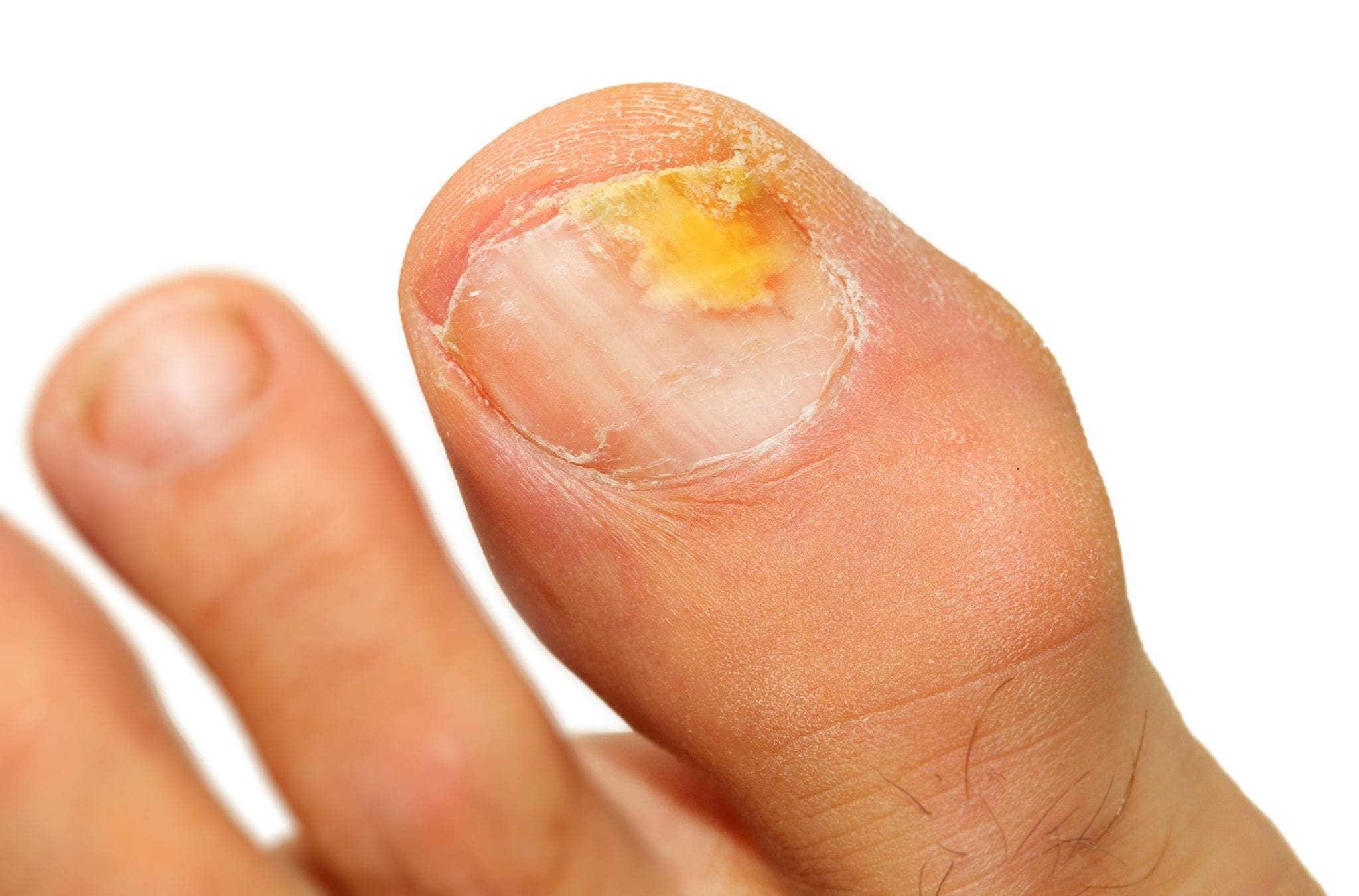
A harmless toenail fungus can be more dangerous than you think. When you feel like you’re handling it and want to take care of it yourself, it’s a tough pill to swallow. It is possible that your toenail fungus may be out of your control. However, especially with ailments related to your feet, you can’t be too overcautious. Get your symptoms checked out so you can rule out something more serious.
At the end of the day, toenail fungus can be more serious than “poor hygiene.” In fact, toenail fungus can often come from the things you don’t seem to realize.
This article will help you recognize when it’s time to get to the foot and ankle doctor to treat your toenail fungus.
Possible Causes of Toenail Fungus
First off, how did we get to this point? What might have started with a little yellowing has turned into a full-on fungus. And you really just don’t know what to do because you’re not certain what caused it in the first place.
The truth of the matter here is—it could have been caused by a whole number of things—poor circulation, diabetes, psoriasis, environmental factors like keeping your feet in water too long or being in a locker room that is hot and humid most of the time, etc. The reason behind your toenail fungus could also be a combination of all these things. A fungal infection can spread and get much worse than it already is. If you’re starting to see or feel these symptoms—you might want to consider going to a doctor:
Symptoms of Toenail Fungus
There are various symptoms to watch out for when you are trying to self-diagnose toenail fungus. These symptoms can include:
- The toenail becoming brittle and ragged with edges that seem to be crumbling.
- A thickening of the toenail that is more than normal.
- The toenail growing into a distorted shape and thickening as it grows.
- When the nail turns a darker shade because of trapped dirt.
- There is a foul smell coming from the nail itself.
- The toenail is turning a different color—like a yellow-brown or a white-yellow.
If you are experiencing any or more of these symptoms, it might be time to try some home remedies or treatments. You can either deal with them at home, by using over-the-counter medications like nail creams or ointments. Or you can alter the nail yourself and then add the medication. Altering the nail may include thinning it down with a file or trimming it down with a clipper or nail scissors. Being able to get to the infected parts of the nail is important when applying medicine.
Don’t get to this point if you can. There are a few preventative care measures you can take right now of your nail:
- Make sure you are trimming your nails straight across instead of leaving some part of the underside of the nail exposed.
- After touching feet—yours or other people, wash your hands thoroughly.
- Opt for socks that wick-away or absorb sweat so your feet don’t stay damp throughout the day.
- When you are showering in public locker rooms or walking around on the wet ground at the pool, for example, use footwear like shower shoes, sandals or cover-toed sneakers.
When you must visit a foot and ankle doctor for your toenail fungus
If you feel like the situation has gotten out of control and you have not seen any progress with your symptoms after applying the home treatments, it’s time to pay your doctor a visit.
In extreme cases, you might be experiencing these symptoms. If so, please visit your doctor immediately to care and treat your toenail fungus. Look out for these symptoms:
- A swollen toe turns red with discoloration or becomes tender to the touch.
- Your toe feels hotter than the rest of your body.
- If the infected toe and/or the surrounding area of the toe is starting to leak pus.
- Red streaks around the infected toe.
- If you develop a fever of 100.4 F or higher, then the infection is moving to the rest of your body.
- The infected nail spreads to the skin.
- Intolerable pain
Once you see your doctor and they have indeed diagnosed the fungal toenail infection, they can do a few things to alleviate the pain, discomfort, and get rid of the infection.
Normally, the treatments and cures associated with the infection are oral prescriptions. Also, prescription anti-fungal nail polish soothe your nails. The polish rids your nail of fungal properties. Strength nail cream can also be applied directly to the area that will clean everything up and keep your feet and nails protected.
If the fungal infection is too serious, the doctor has to actually surgically remove the nail to apply the medication you need to the nail bed. However, this procedure will only be administered in extreme cases and is normally not how a doctor will try and deal with the infection. For doctors, the last thing that they want is to perform a surgery—better for them and for you.
We hope that this has helped you recognize your toenail fungal situation. If you are in doubt, we always suggest you going to your foot and ankle doctor to care for your symptoms as best and as quickly as possible—there’s no need to suffer when help is just one call away.

